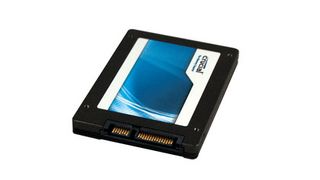How to upgrade your Linux box for Steam
Beef up your Linux box for some extra FPS
Now we get to the most expensive card in our set, Nvidia's GTX570 with 1.25GB of RAM. We first tried it with the open source nouveau drivers, but we had no success running our benchmarks, Darwinia or Steam games, and we guess that if you're going to spend a considerable sum on graphics, you'll want the best drivers.
And there are other advantages to using Nvidia's proprietary drivers. The custom setting utility, for example, which can be installed alongside the drivers, is a surprisingly powerful tool. You can enable TwinView, which we've always found more stable than Xinerama for multiple screens, and switch between various resolutions for each screen without requiring a restart. The Catalyst drivers can do this too, but with Nvidia's you can also over-clock your hardware and monitor the temperature of your GPU.
It's also quite handy for troubleshooting, and we've used the Settings tool to download EDID data from our screens and force other screens to use the same EDID data.

With proprietary drivers, the GTX570 was a clear winner. It returned a strong result from the heaven benchmark, at 66.6fps, and Bioshock ran perfectly from Stream running on Wine, so Nvidia hardware is going the way to go for native versions of Steam. As to whether it's worth the extra money, this depends how important gaming is to you.
Solid State Storage
Upgrade your storage to a drive that's driven only by electrons

While processors, graphics cards, RAM and network connections have all got faster over the years, hard drive technology seems to have moved on very little. They're still using mechanical parts, and as such are among the heaviest, slowest, least reliable and most power-hungry components in a typical PC.
SSDs (Solid State Drives) are changing that, however, and are one of the most exciting developments in PC hardware in the past five years. In this section, we're going to look at these miraculous devices. As well as comparing the two drives we've got, we're going to answer all those perennial questions that people have about SSDs: 'are they worth it?', 'how long will they last?' and 'how can I get the best out of mine?'.
Get daily insight, inspiration and deals in your inbox
Get the hottest deals available in your inbox plus news, reviews, opinion, analysis and more from the TechRadar team.
Are SSDs worth it?
Traditional hard drives contain a spinning disk, which is coated in a magnetic material. This magnetic material gets manipulated by read/write heads as it flies over the disk, and is what stores the data.
In contrast, SSDs have no moving parts. Instead, they're made of millions of tiny transistors (of the floating gate variety), each one capable of storing one bit of information. Because they have no moving parts, they're quieter, lighter, more energy efficient, more durable and faster. This is obviously great if you're planning on using it in a laptop, where space, energy use and noise are all major considerations.
The increased speed of the drive will also have a huge impact on PC and application startup times (and any other operation that reads from the disk a lot), and can make your computer feel dramatically quicker.
All of these benefits sound great, but SSDs are not without their downsides and you should take these into consideration before deciding to buy. Most notably, you can't buy SSDs that are as large as traditional-style hard drives, and they're much more expensive.
For example, the Crucial M4 128GB that we have on test costs £107.99; for £79.99, you can get a 2TB hard drive. If you need a lot of space or are on a very tight budget, an SSD might not be for you.
The answer to the question of whether SSDs are worth it, then, is 'it depends on how you use your computer'.
Most Popular


